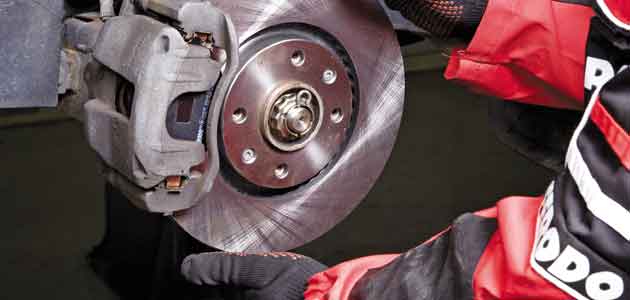
Brakes can overheat for a number of reasons. One of the most common, and easily solved, is due to incorrect setting of the running clearance between brake pad and disc.

Not testing or not setting this regularly and correctly can have two results:
1. When clearance is set too high, poor brake performance is likely to be the result, with the pad not completely meeting the disc for full friction.
2. When the clearance is set too low, the brake pad and disc meet, causing friction and so overheating the brake system. This results in poor brake performance, brake judder, noise, and even permanent disc damage. Permanent damage happens when hot spots lead to plastic deformation of the disc due to the yielding point of the material being exceeded. During the re-cooling process, cracks in the disc occur at these ‘hot spot’ locations.
Checking clearance
The running clearance should be checked regularly. As pads and discs wear, the running clearance steadily increases. All air disc brakes are fitted with an automatic adjuster which self-adjusts during brake applications to accommodate for brake pad and disc wear. However, they should be checked regularly to ensure they’re maintaining proper push rod travel.
Once an adjuster has been properly installed, automatic adjusters shouldn’t need manual adjustment, however they should be checked at each brake pad change or in the case where the brake is running hot. If an automatic adjuster is found to stroke beyond the maximum allowed, this usually indicates that there are other brake problems and these should be analysed and solved.
Brake adjuster check procedure
■ Ensure the brakes are disengaged, and that the vehicle is blocked to ensure it doesn’t roll.
■ Remove the wheel.
■ Press the calliper assembly inboard on its guide pins. Press the inboard pad away from the tappets and check both the tappets and the inboard pad back-plate.
■ Check the running clearance with a feeler gauge between the tappets and inboard pad back-plate.
If the running clearance is smaller or higher than stated by the manufacturer, continue the procedure as follows:
■ Set the running clearance at 2mm.
■ Apply the brakes 50 times.
■ Check the running clearance again with a feeler gauge and it should be within the manufacturer’s desired range.
■ If the running clearance is still smaller or higher than the correct value, either the entire brake or the housing only will need to be fully replaced according to the brake manufacturer’s manuals.









